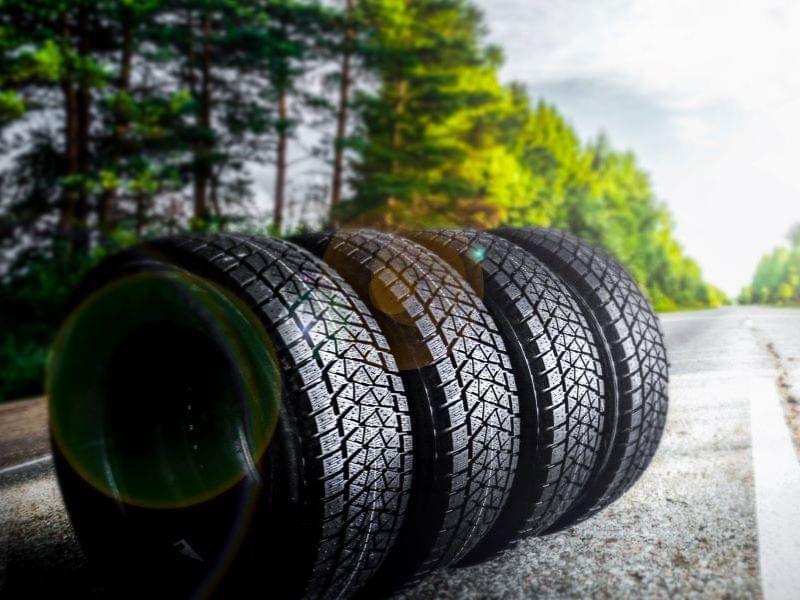Tires make a significant contribution to fuel consumption, claim large amounts of resources to produce, and pose considerable disposal problems. A new report from Smithers,
The Future of Green Tires to 2027, delves into the further sustainable development of tires and details how regulatory pressures will not relent even as the overall tire market is affected by disruptive factors.
According to new data from Smithers featured in the report, the global market for green tires is forecast to increase from an estimated $129 billion in 2022 to $202 billion in 2027. The compound annual growth rate (CAGR) for green tires for the report period is 9%.
The green tire market spans a large part of the tire market, covering on-road applications where fuel economy and vehicle emissions are in the forefront of users and tire manufacturers alike. The tire market segments of concern are the large and broad categories for passenger cars and light trucks (together, referred to as light vehicles), medium- and heavy-duty trucks and buses, and certain vehicles in the off-the-road (OTR) segment that are occasionally used in on-road applications (e.g., construction, agriculture and industrial), where fuel economy and tire-related vehicle emissions concerns come into play. For the most part, the same trends affecting the overall tire market apply to the green segment as well.
Disruptive events
Recent and current disruptive events affecting the whole industry are serving to support or hasten the development and use of green tires, particularly with the price and availability shocks and concerns surrounding fossil-fuel based materials and amplifying already high focus on improving fuel economy.
The tightening of environmental and emissions regulation is a big factor, and driver of green tire adoption, as is the general trans-national emphasis on sustainability. Technology trends in transportation equipment and tires themselves are also big drivers of green adoption. However, in the current environment, the various disruptions to the previous normal environment have been called out for consideration as a separate “trend”, albeit one that influences most of the others directly or indirectly. These disruptions are COVID-19 and ostensible measures to combat it, supply chain disruptions, and the previously simmering and now hot war between Ukraine and Russia.
Russia-Ukraine war
Having simmered since the events of 2014, the tensions between Russia and Ukraine (and the West) erupted in February 2022 with Russia’s outright invasion. This has had hugely disruptive effects on the Russia’s relations with Europe and the US, as well as energy markets, multiple supply chains, and the global financial system that are still unfolding and perhaps not completely understood. All signs currently point to prolongation, escalation and expansion of the conflict.
The first order effects are to disrupt the tire industries and markets of Ukraine, otherwise a rising contributor to production and demand in Eastern Europe. The extensive Western sanctions against Russia in turn disrupt the otherwise significant supply of raw materials such as carbon black and synthetic rubber to global tire production. In addition, western tire manufacturers are exiting the Russian market or distancing themselves as much as possible, most notably Nokian, which is the most exposed. Perhaps offsetting some of the impact on Russia is that China is the world’s largest consumer of tire raw materials (e.g., oil, carbon black, and rubbers) and relies to a large extent on imports. In theory, Russia can turn to China as its major customer by cutting its prices in exchange for hard cash. Transportation is a problem given the sheer distance, the current shortage of containers, as well as the fact that the trans-Siberian railway is for most of its distance still only single tracked. These are problems which could be overcome, but not immediately.
Demographics and mobility
The customer base for the tire industry has a rapidly changing demographic. Projections show that by 2030, millennials and younger will not only be the dominant generations but will also make up more than half of all eligible voters in the US. This same demographic trend is being seen around the world and will have far-reaching effects. In the US, customers are depending less on dealers for information on replacement tires and doing more online research. They are looking for improved warranties, long mileage, and good recommendations on social media. This is and will continue to affect how companies promote their products and which distribution channels they will focus on. The biggest change in society worldwide, however, is the concept of improving sustainability. This in large part is due to the expectations of the millennials and younger generations.
